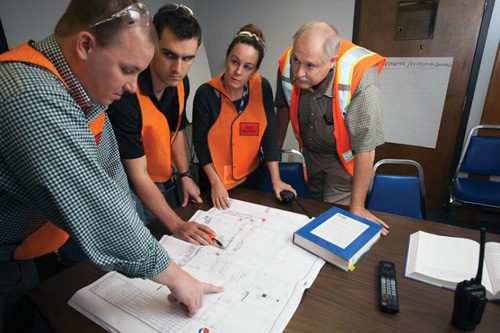Chemical regulation compliance at multiple locations
Our company has multiple locations. What can we do to make sure our compliance with chemical safety regulations is consistent across the organization?

Responding is Kevin E. Smith, director of program development, University of Findlay, Findlay, OH.
For corporations that handle chemicals at multiple facilities, consistent adherence to health and safety regulations can be difficult. The challenges are multiplied when the company in question uses a decentralized system of chemical safety training. In this approach, each location is responsible for regulatory adherence. All are equally expected to meet corporate safety goals, and the means to those ends are the choice of local managers. Each facility hires and manages safety support locally, trying to meet a common corporate directive. The decentralized method is successful for many, but other senior managers may find a discontinuity between facilities as a result. Adherence may become uneven, and continuity between locations can be lost for several reasons. The local safety training provider may not be fully qualified, appropriate training resources may not be available at all locations or the content of training may vary.
Many EHS managers are turning to a centralized chemical safety training program. This method creates a core curriculum and delivery platform that is uniform throughout the company, while including facility-specific information that allows local managers to meet the unique needs of their facilities. Benefits to centralized training management include meeting legally required competency objectives and maintaining focus on a core plan that builds consistency throughout the company.
A key goal is to develop a process that is not only successful but easily used on a routine basis. All the appropriate corporate-level team members, individual site managers and other necessary parties have to be included at the outset. It also can be helpful to choose a proven subject matter expert as a training provider. This should be a partner who will extend the corporation’s EHS training capacity and capabilities, and will help ensure all facilities are in sync. This puts an objective party on the team – someone who can interpret regulations and may clarify adherence for specific facilities.
The results of centralized management are well worth the effort to institute the system. For one major corporation, transitioning to a centralized training approach meant nothing less than a dreamed-of reduction in lost-time incidents.
The company had multiple reportable incidents in one year, but reduced that number to zero the next year – and credited that to a new cohesive means of chemical safety training. Employees finally were receiving the same core competency level of training at all locations under the direction of a trainer who had served varied training needs, and it made all the difference.
Other benefits of centralized training include:
- The development of consistent internal communication channels, useful during response phases
- The flexibility to train at any level beyond the core requirements
- More effective and better-coordinated support from subsidiaries and third parties
- Improved quick-reference materials and uniform equipment packaging
A centralized training plan may be ideal for organizations that need to tie multiple chemical safety programs together, allowing them to gain a more cohesive protocol and uniform outcomes. Centralization is also a great way to help corporations overhaul an outdated program.
This method does not need to be limited to chemical safety training. Centralized training management also can serve as a strategy that incorporates planning for all potential natural, technological and man-made hazards, including weather conditions, plant site and local accidents, facility security, workplace violence prevention, etc.
If you find your adherence to regulations is uneven from location to location, a centralized approach to safety training management may be the right strategy for you.
Editor's note: This article represents the independent views of the author and should not be construed as a National Safety Council endorsement.
Post a comment to this article
Safety+Health welcomes comments that promote respectful dialogue. Please stay on topic. Comments that contain personal attacks, profanity or abusive language – or those aggressively promoting products or services – will be removed. We reserve the right to determine which comments violate our comment policy. (Anonymous comments are welcome; merely skip the “name” field in the comment box. An email address is required but will not be included with your comment.)

